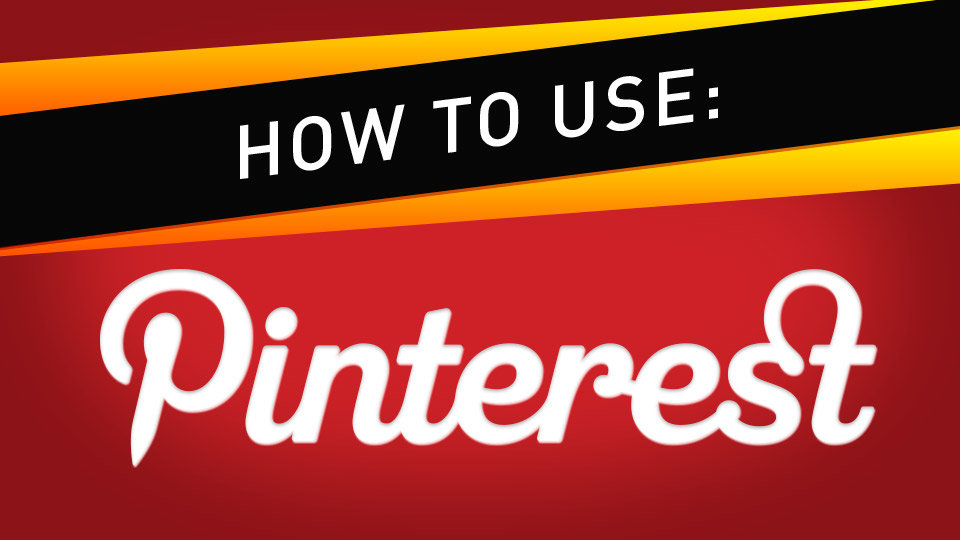How to Use Pinterest
By Angelina Burkholder
When Pinterest first kicked off, the common misconception around the platform kept lots of businesses far away from it—it was misunderstood as a platform purely for females to design their dream homes and plan a million dollar budget wedding. But as the world discovered the profitable marketing opportunities hidden within the platform, many organizations, nonprofits, and businesses finally began dabbling in the pinning world.
Here’s the biggest selling point of Pinterest—the shelf life of content on this platform far outweighs other social media outlets. With Pinterest’s smart feed algorithm, quality pins that receive daily or weekly interaction could potentially show up at the top of followers’ feeds for months.
On Pinterest, new content doesn’t just automatically replace older content, like a feed on Twitter. Instead, Pinterest chooses to place the best pins first rather than the newest ones. All pins are judged by their quality, source, and interaction/engagement rate and the “best” pins are those that score high in all those categories.
If lots of users pin and repin content from a certain website or blog, then those pins automatically incur higher quality ratings as compared to an isolated pin from a random site. Pinterest also checks the source of every pin to make sure it’s originating from a reputable site featuring good content. This process also serves to eliminate spammers who sometimes change the link source of pins to something other than what the photo indicates.
With the smart feed, you no longer have to worry about pinning fresh new content every day, giving you a break from the overwhelming social media stress.
So what kind of boards should you make and what kind of content should you pin?
1. Ministries and churches
Create a board for each arm of your ministry—students, children, adults, young adults, etc. Churches can also make a sermon series board containing graphics of old, current and upcoming series linked to “learn more” pages on your site along with curriculum or resource boards that serve as valuable assets to your audience. You can also make community outreach boards that showcase various projects and volunteer days to give people an inside look into your church or ministry. Supplement dry seasons with inspiration boards, verse board, spiritual goal boards, etc.
2. Businesses
First and most importantly, create boards that show off your products and services. Split them up to make sure each board sufficiently explains and highlights each part of your business, linking to various site stores where customers can buy. Make sure to also use this space to set up boards that highlight your credibility as a thought leader in your industry. These can range from infographic boards on certain topics to tip boards and article boards. If you work with lots of clients, create boards showing off the work that you’ve done for them featuring testimonials and links.
3. Personal brands
Personal brands have a much larger flexibility on Pinterest. For instance, if you’re an author, set up your profile to center on author resources, tips, articles, helpful links, and recommendations etc. Of course, always be sure to highlight your own work, site, and blog. But beyond that, you can branch out and give people a glimpse into your personal life with boards that highlight your hobbies and hidden talents. Your profile should be professional but can also lean toward fun and outgoing.
Remember, no matter who you are, you don’t have to make boards just about yourself. Use your space to highlight other churches, ministries, people, or organizations that you admire. You can network with people simply by showing interest and admiration for their work and impact.
For more in-depth ways to succeed on Pinterest, check out some of our favorite brands that are creatively achieving marketing goals with Pinterest: Whole Foods, Petplan Pet Insurance, Sony Electronics and The A Group.
When you’re ready to start pinning, pin one of three ways:
You can add pins in three different ways—you can pin from websites, re-pin from your home feed, or upload new pins directly from your computer. Doing all three has great benefits.
The easiest way to add content to your profile is to repin from your home feed or pin content from other people’s site. This shows that you care enough to interact with other people’s content, but doing too much takes away from your profile’s originality.
To make your profile stand out from others, add your own original content. You can do this through directly adding photographs, illustrations, graphics, info graphics, and screenshots from your laptop. When you upload a new pin, add a description and hyperlink the pin back to a relevant page on your website so that it’s not just a static pin.
For example, if you’re a photographer and you upload wilderness photos, hyperlink them all back to your site home page or your blog post featuring the photos. If you’re a church sharing the graphic of a new series, link the pin back to a page on your site that features further information on the series.
You can also add the Pinterest pin extension to your browser and pin your original photos directly from your site or easily pin other people’s content directly from their sites. But no matter how or what you pin, make sure that each pin is something that will bring value to your followers.
Pinterest is adding even more twists and updates.
Pinterest also has some exciting changes up its sleeves. Several months ago, it announced buyable pins. Now when users see a product they really like, they can purchase directly from through Pinterest. It’s been noted as a change that could significantly influence the buying market for the 2015 Christmas shopping season.














